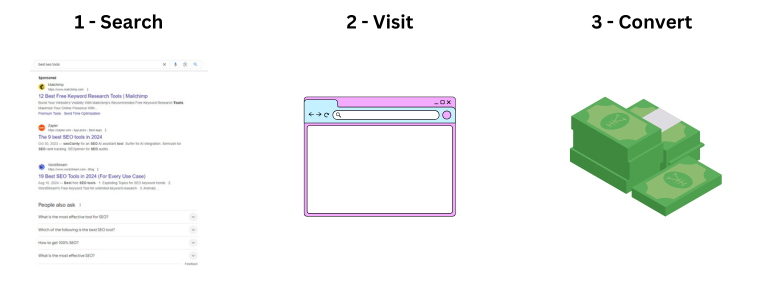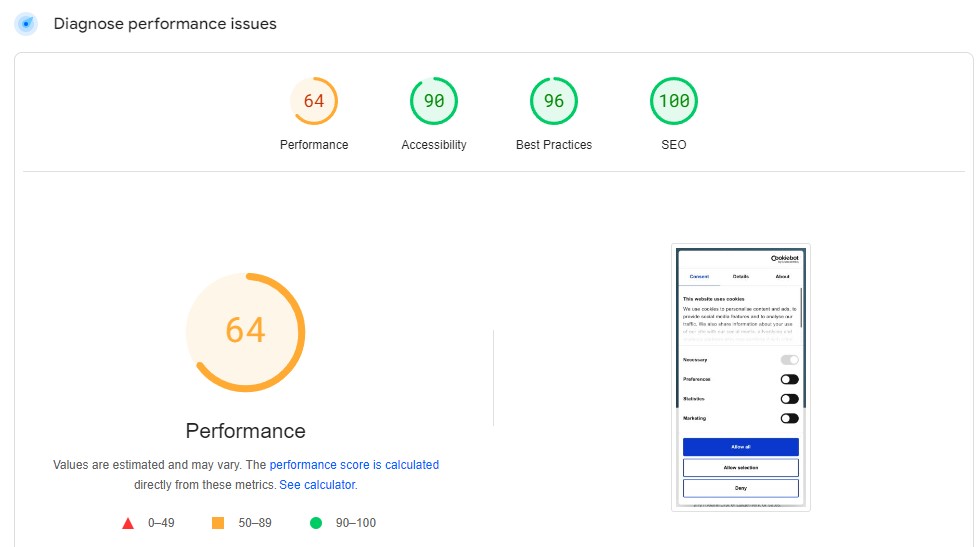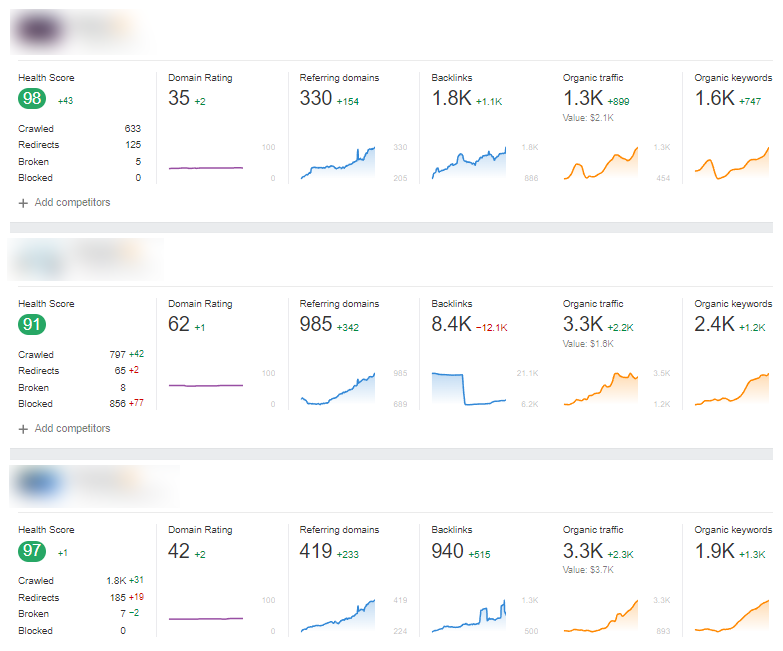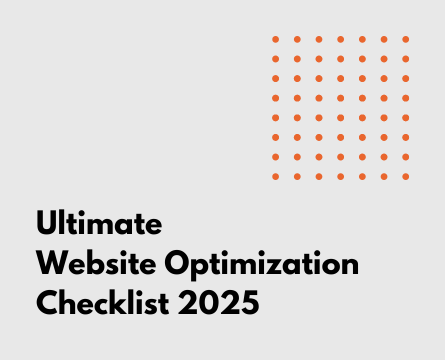What is SEO for Lead Generation?
SEO for lead generation refers to the process of optimizing your website and content to attract organic traffic that can convert into leads for your business. It involves using SEO strategies like keyword optimization, content creation, and technical enhancements to ensure that your website ranks high in search engine results. This not only brings in visitors but also draws in the right kind of audience—those who are actively searching for products or services like yours. Let’s explore why SEO plays such a vital role in generating leads and how it compares to other strategies like PPC.
Why SEO is crucial for lead generation?
SEO is crucial for lead generation because it provides a sustainable and cost-effective way to attract potential customers who are already looking for solutions that your business offers. Unlike traditional outbound marketing methods, where you reach out to prospects, SEO brings the right prospects to you. By appearing at the top of search engine results pages (SERPs) for relevant keywords, your business becomes more visible to users who are ready to engage or make a purchase.

Moreover, SEO builds long-term credibility and trust, as users often associate top-ranking websites with authority and relevance in the industry. As your SEO efforts compound over time, the organic traffic that SEO drives can produce a consistent stream of high-quality leads, making it an essential element of any digital marketing strategy.
How does SEO help in attracting quality leads?
One of the key benefits of SEO is its ability to attract high-quality leads—people who are not just browsing but are genuinely interested in your products or services. By targeting specific, high-intent keywords, you ensure that your website is visible to users who are likely closer to making a buying decision. For instance, someone searching for “best B2B marketing software” is likely further along in the decision-making process compared to someone searching for “what is B2B marketing.”
Additionally, SEO-optimized content answers questions or solves problems that your potential customers are facing, positioning your business as a trusted resource. The more targeted and relevant your content, the higher the chance that these visitors will convert into leads by filling out a form, signing up for a newsletter, or requesting a demo.
What is the difference between SEO and PPC for lead generation?
While both SEO and PPC (Pay-Per-Click) are valuable strategies for lead generation, they work in different ways and have unique advantages.
- SEO focuses on organic traffic by improving your website’s ranking in search results over time through content optimization, link building, and technical improvements. SEO is generally more cost-effective in the long run since you don’t pay for each click, and it builds long-term visibility and credibility. However, it takes time to see results, as it’s a long-term investment.
- PPC, on the other hand, involves paying for ad placements on search engines or other platforms. With PPC, you can target specific keywords and immediately appear at the top of search results. While PPC offers quick visibility and lead generation, you’ll need to pay for every click, and the results stop as soon as you pause your ads. PPC can be more expensive over time, especially in competitive industries where cost-per-click (CPC) is high.
In short, SEO is a more sustainable, long-term strategy for generating leads, while PPC is ideal for driving immediate traffic and short-term results. Many businesses choose to use both strategies in tandem to maximize their lead generation efforts.
How SEO Drives Lead Generation: Key Strategies
In today’s digital landscape, generating leads through search engine optimization (SEO) is essential for any business looking to grow its customer base. SEO not only helps drive organic traffic to your website, but it also ensures that your brand gets noticed by potential customers who are actively searching for your services. By optimizing your site for the right keywords and improving your site’s overall performance, you can turn visitors into qualified leads. Let’s dive into some key SEO strategies that can help you boost lead generation and take your business to the next level.
1. Perform an SEO audit of your website
An SEO audit is the first step in identifying opportunities to improve your site’s visibility in search engine results. This process involves checking your website for technical issues, on-page SEO errors, and content gaps that might be preventing your site from ranking higher. By using tools like Ahrefs or SEMrush, you can run a comprehensive SEO audit to pinpoint issues such as broken links, missing meta descriptions, and slow page load times. Fixing these issues ensures that search engines can crawl your site effectively, increasing your chances of ranking higher and attracting more leads.
2. Optimize your content with target keywords
Targeting the right keywords is the foundation of any successful SEO strategy. Conduct keyword research to identify terms and phrases your potential customers are searching for. Focus on long-tail keywords that are specific to your niche, as these often have lower competition and attract users who are closer to making a purchase decision. Tools like Google Keyword Planner or SEMrush can help you discover high-converting keywords. Once you’ve identified the right keywords, integrate them naturally into your content, including headings, meta descriptions, and throughout the body text, to improve your rankings and attract relevant leads.
3. Create high-quality, SEO-friendly content
Content is still king when it comes to SEO and lead generation. By creating high-quality, informative, and engaging content, you can attract potential customers and position your brand as an authority in your industry. To ensure your content ranks well, follow best practices for on-page SEO such as using keyword-rich headings (H2, H3), optimizing images with alt tags, and providing internal links to related content. Don’t forget to structure your blog posts in a way that answers your audience’s questions clearly and concisely. The better your content, the more likely you are to convert organic traffic into valuable leads.
4. Improve website speed and user experience
A fast-loading website improves user experience and plays a critical role in SEO rankings. Search engines prioritize sites that provide a smooth and efficient experience, and users are more likely to convert if they don’t have to wait for pages to load. You can analyze your website’s speed using tools like Google PageSpeed Insights, which highlights areas for improvement. Some common fixes include optimizing image sizes, reducing redirects, and leveraging browser caching. Ensuring that your website is mobile-friendly is also crucial since a significant portion of traffic comes from mobile devices. Fast, responsive websites help reduce bounce rates and increase the likelihood of converting visitors into leads.

5. Build a strong backlink profile
Backlinks, or inbound links from other reputable websites, are a major factor in SEO success. Building a strong backlink profile shows search engines that your site is authoritative and trustworthy, which can boost your rankings. One effective way to earn backlinks is by creating high-quality, shareable content such as blog posts, infographics, and industry reports. You can also engage in outreach to influencers and industry leaders to share your content, or offer to write guest posts on reputable sites within your niche. A case study from a B2B company found that earning natural backlinks increased their organic traffic by 50%, ultimately generating more qualified leads.
6. Develop a local SEO strategy
If your business has a physical location or serves specific geographic areas, local SEO is a must. Optimizing your website for local searches can help you capture traffic from users looking for services in your area. Start by creating or claiming your Google Business Profile and ensuring that your business name, address, and phone number (NAP) are consistent across all platforms. Encourage satisfied customers to leave reviews, as positive feedback can boost your local rankings. In addition to optimizing for local keywords, build local backlinks from community websites, directories, and news outlets to further enhance your local presence and generate leads.
7. Encourage and manage customer reviews
Online reviews are a powerful factor in both SEO and lead generation. Search engines prioritize businesses with high-quality, recent reviews, while potential customers often trust the opinions of previous clients. Encourage your satisfied customers to leave reviews on platforms like Google and Yelp, and make it easy for them by sending follow-up emails or providing a link on your website. Not only do reviews improve your SEO rankings, but they also help establish credibility, which can significantly impact your conversion rate. Engaging with customer feedback by responding to reviews—both positive and negative—can further enhance your brand’s reputation and attract more leads.
8. Monitor and track SEO performance with key metrics
To ensure your SEO efforts are generating leads, it’s important to track key performance indicators (KPIs) such as organic traffic, keyword rankings, and conversion rates. Tools like Google Analytics and Google Search Console allow you to monitor these metrics, helping you understand how users are finding your site and what actions they are taking. By regularly reviewing your SEO data, you can identify areas for improvement and make data-driven adjustments to optimize your lead generation strategy. Keeping an eye on your SEO performance ensures that your efforts are continuously driving high-quality leads to your business.

By implementing these SEO strategies, you can enhance your online presence, attract more traffic, and ultimately convert visitors into leads.
How to Convert SEO Leads into Customers
Attracting leads through SEO is just the first step. To convert these leads into customers, you need to optimize your website for conversions and implement effective lead nurturing strategies. The following steps will help ensure that the leads you generate through SEO are not only captured but also nurtured and moved down the sales funnel.
Optimize your website for conversions
Driving traffic through SEO is important, but it’s only effective if your website is optimized to convert visitors into leads and customers. A well-optimized website ensures that users have a seamless experience and are encouraged to take meaningful actions, such as filling out a contact form, subscribing to a newsletter, or making a purchase.
Landing page optimization plays a critical role in driving conversions. Each landing page should be tailored to a specific audience or offer, with focused messaging, minimal distractions, and a strong value proposition. A/B testing different elements—such as headlines, button text, and imagery—can help you find the most effective combinations for maximizing conversions.
Check out our article on website optimization, which provides actionable insights on improving user experience and turning visitors into leads.

Lead nurturing techniques
Once a lead is captured, the next step is to build a relationship through lead nurturing. Most leads aren’t ready to buy immediately, so it’s essential to keep them engaged with relevant content that addresses their needs and guides them through the buyer’s journey.
How to engage and nurture leads with personalized content
Personalized content is key to an effective lead nurturing strategy. Segment your leads based on their behavior, interests, and where they are in the buyer’s journey. Then, deliver content tailored to their specific needs and pain points. For example, someone who downloaded an introductory guide may be interested in more educational content, while a lead who viewed pricing pages may be closer to making a purchase and would benefit from case studies or free trials. Use email marketing, retargeting ads, and personalized landing pages to keep leads engaged until they’re ready to convert.
Aligning SEO with sales strategies
For successful conversions, your marketing and sales teams must work together to close leads. Aligning SEO with sales strategies ensures that both teams are on the same page, allowing for smoother transitions from lead generation to conversion.
Collaboration between marketing and sales to close leads
Marketing teams focus on generating leads through SEO, but sales teams play a crucial role in converting those leads into customers. By sharing data and insights, the marketing team can inform sales about the leads’ behavior, such as which content they’ve interacted with or which pages they’ve visited. This allows the sales team to approach each lead with a personalized pitch that addresses their specific needs. Additionally, the sales team can provide feedback on the quality of leads generated through SEO, helping marketing refine their strategies to attract higher-converting traffic.
Wrapping Up
Converting SEO leads into customers requires more than just driving traffic—it takes a focused approach to optimize your website for conversions and nurturing leads effectively. By aligning your SEO efforts with sales strategies and continuously optimizing your website, you can turn more leads into loyal customers.
Need help with your SEO lead generation strategy?
If you’re looking to refine your SEO lead generation strategy or need help implementing the tactics we’ve discussed, our team of experts is here to assist. Contact us today to start optimizing your SEO for maximum lead generation.



